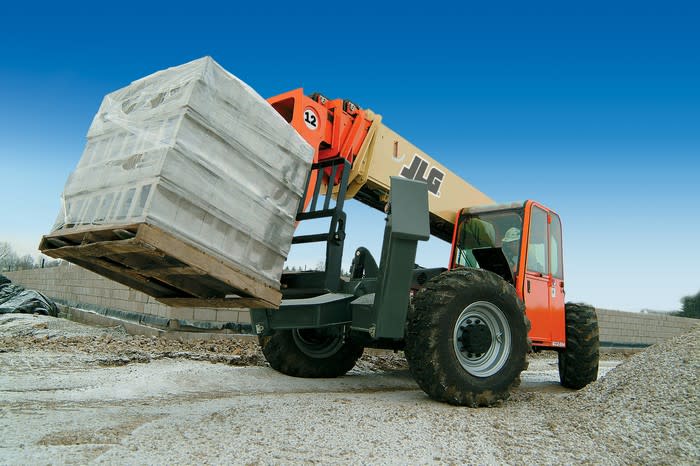Why Shares of Oshkosh Fell Almost 16% in August
What happened
Shares of Oshkosh (NYSE: OSK) lost 15.9% in August, according to data provided by S&P Global Market Intelligence, despite management reporting quarterly earnings and sales that came in ahead of expectations and raising full-year guidance. The company's weakness seems to be tied to broader macro worries about large equipment manufacturers and comments management made on the post-earnings conference call.
So what
Oshkosh, a maker of a variety of large trucks for the military, commercial, and government sectors as well as access equipment for construction sites, had been a strong performer coming into August, up more than 35% for the year. But that all changed last month, when shares fell sharply after the company had delivered strong quarterly results.

Oshkosh's JLG-brand lift equipment. Source: Oshkosh.
But company officials on the post-earnings call mentioned demand "moderation" a number of times, particularly in the access equipment segment in the U.S. and Europe. The company believes weather is partially to blame, as many regions of the U.S. experienced higher-than-average rainfall and flooding. But management did admit that talk of trade wars and economic uncertainty was likely impacting capex spending decisions by large-equipment purchasers.
Fears of a recession that could crimp capex spending worsened mid-month after the 10-year Treasury yield fell below the 2-year Treasury yield. In normal times, investors require a bigger payday to accept a longer maturity length. When short-term rates are higher than longer-term rates, a so-called inverted yield curve occurs, and it's usually a sign of economic uncertainty and possible imminent recession.
Now what
Oshkosh has a well-diversified portfolio and actually figures to hold up better than many other heavy-equipment manufacturers in the event of a recession. But that doesn't mean now is a good time to buy into any stock in this group. The company does not believe the next big replacement cycle for equipment will ramp up until 2021, leaving more potential negative catalysts than positive ones in the quarters to come.
Oshkosh is not yet ready to go on the list of best value stocks. The shares have performed well so far in September, and despite the August dip, they're more than 2 percentage points higher than the S&P 500 for the year. At some point, if the pressure builds, a buying opportunity could emerge, but for now, Oshkosh shares are best left on the watch list.
More From The Motley Fool
Lou Whiteman has no position in any of the stocks mentioned. The Motley Fool has no position in any of the stocks mentioned. The Motley Fool has a disclosure policy.
This article was originally published on Fool.com

 Yahoo Finance
Yahoo Finance 